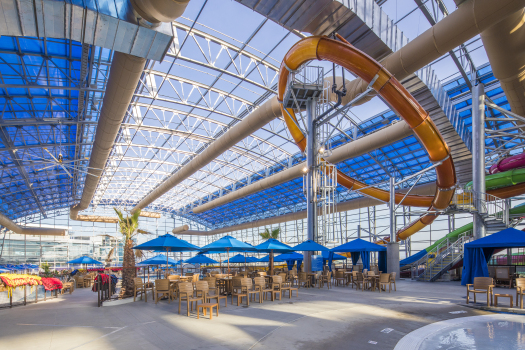A great article by Costar News highlights the Blue Harbor Resort in Sheboygan, Wisconsin. This beautiful resort, which H&LA has had the privilege of studying on multiple occasions, is credited for helping change the trajectory of Sheboygan into a regional tourism center.
Published by: Clare Kennedy/Costar News
Published date: January 2021
The Blue Harbor Resort & Conference Center’s graceful white turrets, distinctive red roof and perch over the turquoise waves of Lake Michigan make it eye-catching. But the hotel stands out for more than its design.
It helped change the complexion and trajectory of an entire community, the Wisconsin city of Sheboygan.
Sheboygan has been described many ways in its day, mostly in rather unromantic terms that mirror its hardy, blue-collar roots. From the 1880s to the 1930s, it was called “Chair City” because of its wealth of furniture manufacturing, and then the “City of Five C’s.” That moniker was thought to better reflect Sheboygan’s essence at the time, a heady mix of cheese, children, churches and concrete, in addition to chairs. Sheboygan also claims to be the “Bratwurst Capital of the World.”
More recently, it has become known as the “Malibu of the Midwest,” an honorific it has earned as a result of its successful transformation into a regional tourism center. The long-range revitalization effort is expected to top $100 million in added value to the tax base when all is said and done.
The name pays homage to Sheboygan’s scenic beauty, quaint marina and shops, luxurious lakefront lodgings and surf scene, though it lacks the gentle Mediterranean climate and stable of celebrity residents boasted by its California counterpart.
Blue Harbor was an instrumental part of Sheboygan’s rebirth.
The lavish, four-story hotel and indoor water park at 725 Blue Harbor Drive was constructed in 2003 on brownfield land on a peninsula tucked between the mouth of the Sheboygan River and Lake Michigan. For a century, the site was used for heavy industry, initially ship-building and then storage of lumber, fossil fuels, salt and fertilizers, according to city documents.
“The area was very industrial,” Sheboygan Mayor Michael Vandersteen told CoStar News. “It was where coal boats came in.”
The 42-acre area was deeply contaminated as a result. One local official described it as “literally the black eye of the community” in a 2017 article in E&E News, a trade journal about energy and environmental policy.
In the early 1990s, Sheboygan approved a plan to clean up and redevelop the 42-acre area, now called the South Pier District. The effort began with the construction of the privately owned Harbor Centre Marina in 1993, according to the U.S. Army Corps of Engineers.
Blue Harbor was the second big coup for Sheboygan, Vandersteen said. It cemented the South Pier’s upward trajectory by validating the city’s aspirations and catalyzing further investment in the area.
The $54 million resort has 179 rooms and 64 villas and was built by Great Lakes Companies of Madison, which was then the owner of the Great Wolf Lodge chain.
Its design was inspired by wooden beach resorts that proliferated during the Victorian era. Blue Harbor is frequently compared to the historic Hotel del Coronado in San Diego, one of the few remaining examples of that style.
Blue Harbor sits between the two main beaches that have become hubs of freshwater surfing, Vandersteen said. Sheboygan is now well-known for that extreme sport outside the Midwest thanks to the efforts of two local men, twin brothers Larry “Longboard” and Lee “Waterflea” Williams.
The pair started the long-running but now-defunct Dairyland Surf Classic and were the main subject of a 2010 book about the genesis of Sheboygan’s surf scene, “Some Like It Cold.”
The height of the surfing season on Lake Michigan is late summer through winter, Vandersteen said, when the region’s frigid but violent weather is capable of kicking up surfable but fantastically cold swells.
Blue Harbor also has a 54,000-square-foot heated indoor water park that stays a balmy 84 degrees year round for those who are not up to braving Lake Michigan in February.


